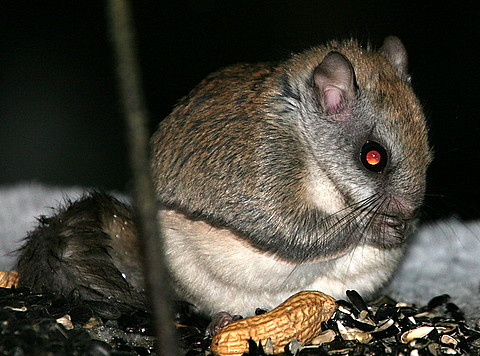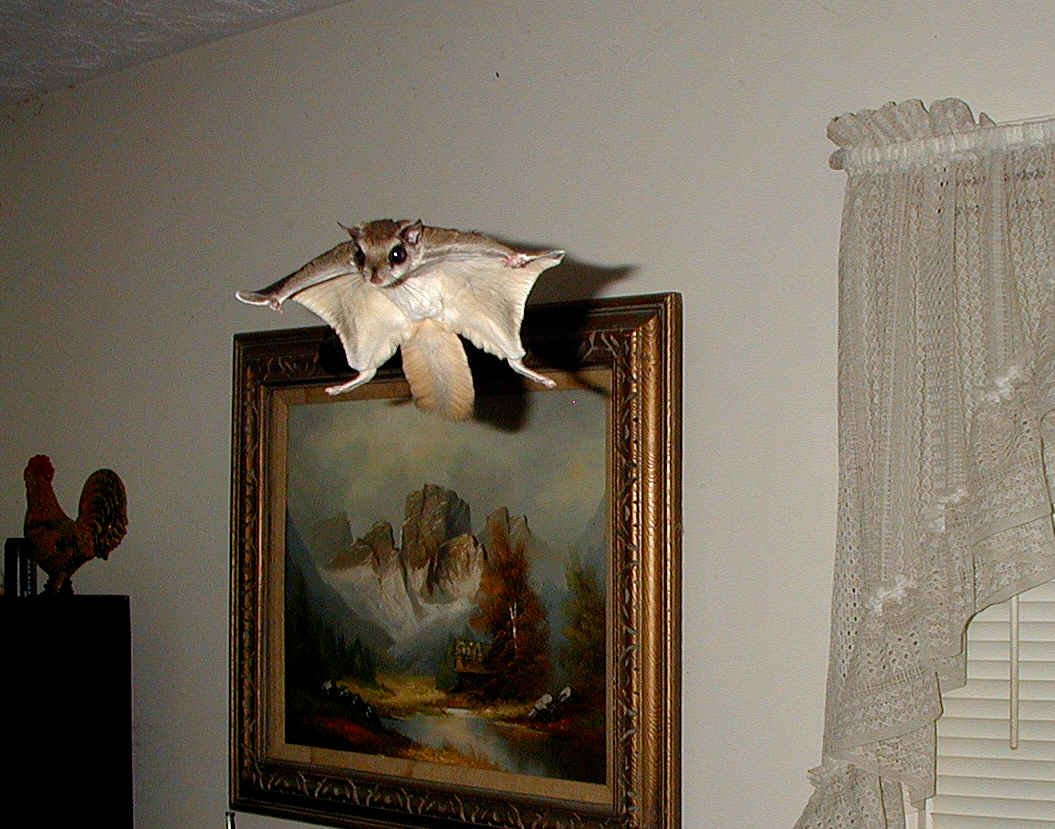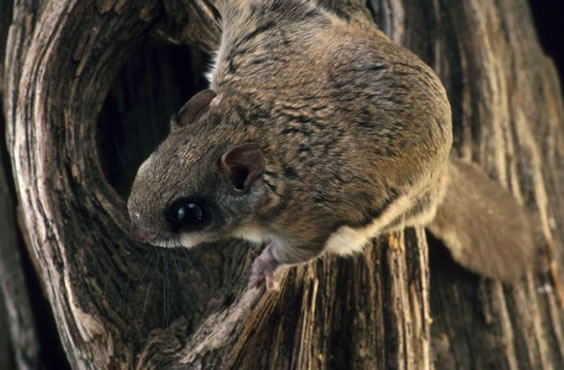The Flying Squirrels really dose not fly like the birds can fly but they give a very beautiful look, they are the Gliders they use there skin to glide and ride on the air the look very funny and Amazingly beautiful when they fly in the air from one tree to another tree. Through the Wikipedia i had get knowledge that the flying squirrels are gliding up to Ninety meters across in the air. They have compete control on their flight as a pilot do. They use there front and back legs to change the direction where they had to go and get turn left or right whither they have to land with speed or low speed or slowly. The flying squirrel has a fluffy and bushy tail, the tail plays main role in the flight if flying squirrel, the tail gives the work of stabilize in the air during gliding the tail works as a airplanes main landing tool also it blocks the air at the time of landing so the flying squirrel could not get hurt. As they look very cute and beautiful but their life is so short they live almost Six to Seven years in the wild but as one in captivity may live about Fifteen to Sixteen years long. Because in the wild the predators are every where as they are little in the size the killers and the predators are more in the number to hunt little animals. The flying squirrels hunt and search their food in day light. They Flying squirrels eat almost every thing which is available in there environment, they eat only when they are hungry enough to get out from their home and nest. The Flying squirrels of Southern sides eats Seeds, warms, fruits, leaves, slugs, snail, insects, spiders, tree shrubs flowers, fungi, and every thing which is available on the trees. The meting season of the flying squirrels is between the February to March. The Female flying squirrels take care of their children in the nests the male flying squirrels dose not take any participation in the children care. The female flying squirrel takes care of their little babies till they are able to leave the nest and much more able to eat and find food on their own.
Sunday, June 12, 2011
Flying Squirrel
The Flying Squirrels really dose not fly like the birds can fly but they give a very beautiful look, they are the Gliders they use there skin to glide and ride on the air the look very funny and Amazingly beautiful when they fly in the air from one tree to another tree. Through the Wikipedia i had get knowledge that the flying squirrels are gliding up to Ninety meters across in the air. They have compete control on their flight as a pilot do. They use there front and back legs to change the direction where they had to go and get turn left or right whither they have to land with speed or low speed or slowly. The flying squirrel has a fluffy and bushy tail, the tail plays main role in the flight if flying squirrel, the tail gives the work of stabilize in the air during gliding the tail works as a airplanes main landing tool also it blocks the air at the time of landing so the flying squirrel could not get hurt. As they look very cute and beautiful but their life is so short they live almost Six to Seven years in the wild but as one in captivity may live about Fifteen to Sixteen years long. Because in the wild the predators are every where as they are little in the size the killers and the predators are more in the number to hunt little animals. The flying squirrels hunt and search their food in day light. They Flying squirrels eat almost every thing which is available in there environment, they eat only when they are hungry enough to get out from their home and nest. The Flying squirrels of Southern sides eats Seeds, warms, fruits, leaves, slugs, snail, insects, spiders, tree shrubs flowers, fungi, and every thing which is available on the trees. The meting season of the flying squirrels is between the February to March. The Female flying squirrels take care of their children in the nests the male flying squirrels dose not take any participation in the children care. The female flying squirrel takes care of their little babies till they are able to leave the nest and much more able to eat and find food on their own.
Subscribe to:
Post Comments (Atom)




















No comments:
Post a Comment